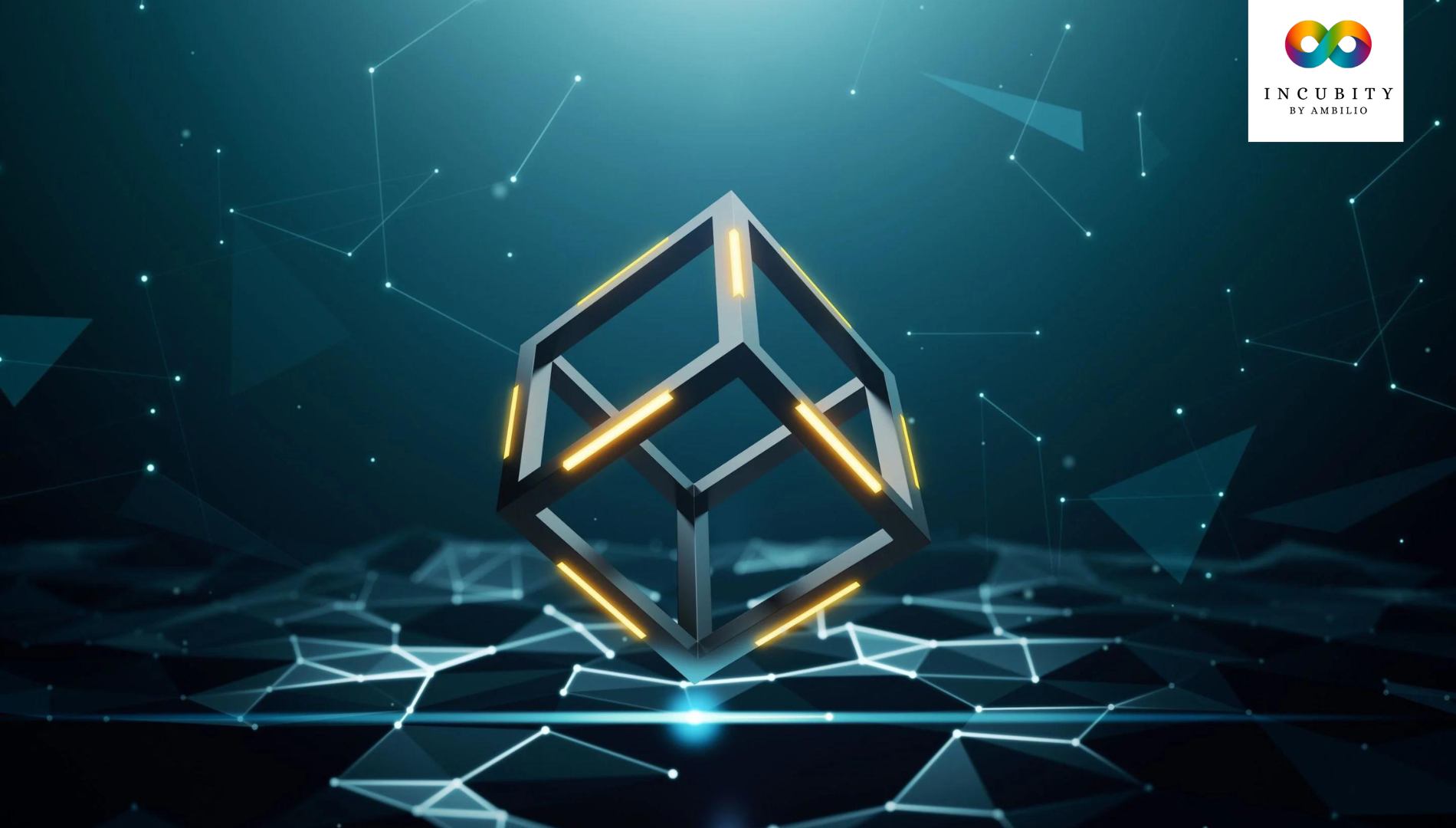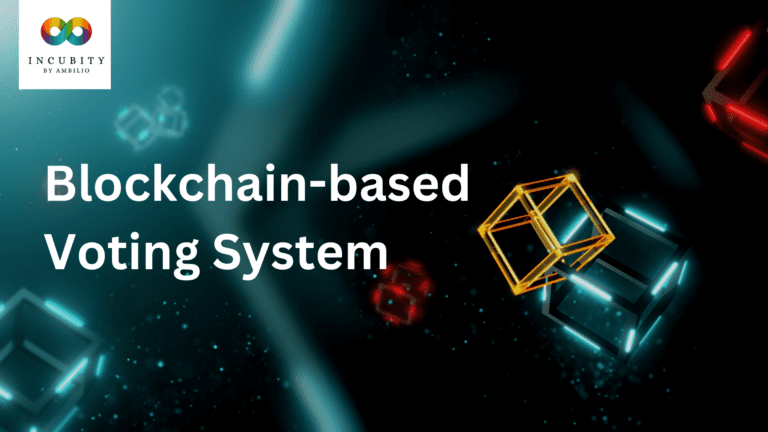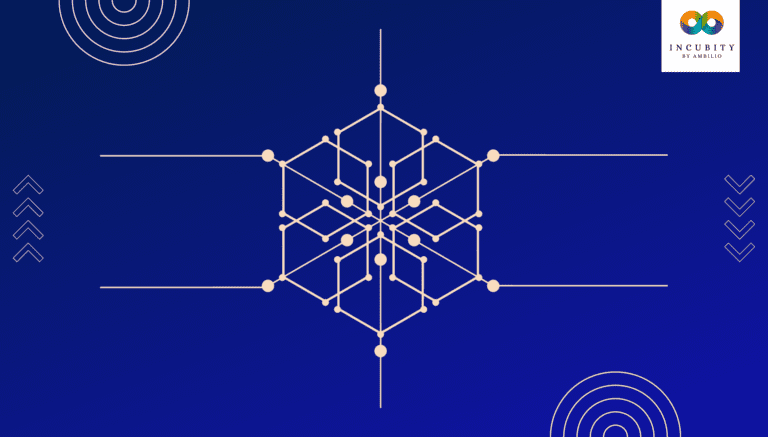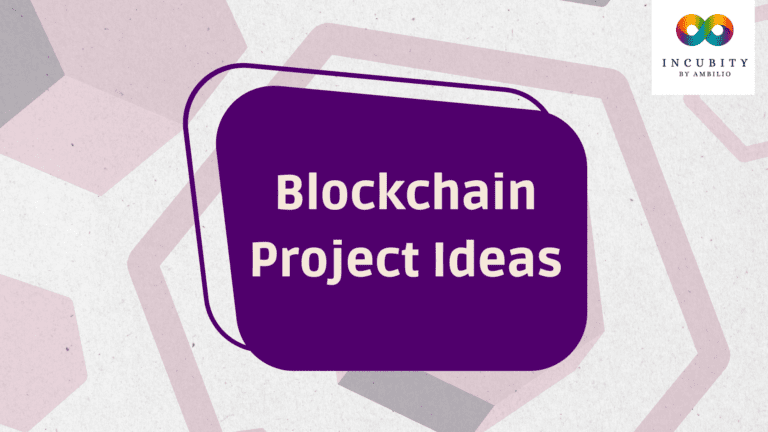Before jumping on understanding the blockchain technology, first, we need to understand the blockchain ecosystem. Here we can know the important basic of this technology including roles, people, technology, etc. In this article, we will learn about blockchain ecosystem in detail. We will discuss its components, in addition to learning about blocks, wallets, keys, and addresses in a blockchain ecosystem. Finally, we will provide a couple of ways to protect your wallets and addresses.
Blockchain Ecosystem
A blockchain ecosystem refers to the network of individuals, businesses, and organizations that use, contribute to, or build upon a blockchain network. It encompasses the technology, infrastructure, and community that support and interact with a blockchain. The blockchain ecosystem is a combination of different components that work together to provide a secure and decentralized platform for various applications.
Components of the blockchain ecosystem include:
- Blockchain Network: The most fundamental component of a blockchain ecosystem is the blockchain network itself. This is a decentralized, distributed ledger that records and verifies transactions. The network is maintained by nodes, which are computers that are connected to the blockchain and validate transactions. The network is secured through complex mathematical algorithms and consensus mechanisms that ensure the integrity of the data stored on the blockchain.
- Users of the Blockchain: These include individuals and organizations that hold and transfer assets on the blockchain. They use various types of blockchain wallets, such as software, hardware, or paper wallets, to store their assets and interact with the blockchain network.
- Developers and Engineers: Their job is to build and maintain the blockchain network. They design smart contracts, and decentralized applications, and create new functionalities for the blockchain network.
- Miners or Validators: Their job includes processing and validating transactions on the blockchain. These participants use powerful computers to solve complex mathematical problems and add new blocks to the blockchain. They are incentivized through rewards for their efforts.
- Businesses and Organizations: These are the organizations that use or build on top of the blockchain for various purposes such as financial services, and supply chain management. They implement blockchain solutions to improve efficiency, transparency, and security in their processes.
The first and most famous blockchain ecosystem is the Bitcoin network. It was launched in 2009 by an unknown individual or group using the pseudonym Satoshi Nakamoto. It is the first decentralized digital currency and still the largest by market capitalization. The second most popular blockchain ecosystem is Ethereum, which is a decentralized platform that enables the creation of smart contracts and decentralized applications.
The blockchain ecosystem is constantly evolving, with new networks and projects being launched regularly. Some of the newer and more promising ecosystems include the Binance Smart Chain, Solana, and Algorand. It also isn’t limited to just public networks, as there are private blockchain networks used by companies and organizations for internal use cases.
Types of Blockchain Ecosystem
There are mainly 4 types of blockchain ecosystem:
- Private ecosystem: This is led by the single parties.
- Public ecosystem: This ecosystem remains open for public use.
- Consortium ecosystem: They involve two or more organizations.
- Hybrid ecosystem: These are the hybrid of above three.
Blocks in a Blockchain Ecosystem
A block is a collection of transactions that are recorded on the blockchain. Each block contains a list of transactions, a timestamp, and a reference to the previous block, forming a chain of blocks. The transactions are processed by network participants called Miners or Validators who use powerful computers to solve complex mathematical problems and add new blocks to the blockchain. Once a block is added to the blockchain, it cannot be altered or deleted.
There are different types of blocks in the blockchain ecosystem, each with its function and characteristics.
- Genesis Block: The first block in the blockchain. It is unique and does not have a reference to a previous block.
- Regular Blocks: Blocks that contain a reference to the previous block, and a list of transactions that are waiting to be added to the blockchain.
- Orphan Blocks: Blocks that are not part of the main blockchain and do not have a reference to the previous block. They may occur when two miners solve the mathematical problem at the same time and create two different blocks. The network will then choose one block to be added to the blockchain, and the other block becomes an orphan block.
- Stale Blocks: Blocks that were mined correctly but discarded by the network because they were not added to the blockchain on time.
Each block on the blockchain also has a unique identification number called a ‘block height’ which represents the position of the block in the blockchain.
The basic contents and functionality of a block are common in different blockchain ecosystems, however, the structure of the block, along with some properties may change from one blockchain ecosystem to another. Each ecosystem is built to serve a specific purpose, therefore, block properties might vary among different ecosystems to meet the goals of its ecosystems.
Let’s take the most famous ecosystems and compare their blocks as an example:
| Bitcoin Blocks | Ethereum Block |
|---|---|
| Contains a list of validated transactions that have occurred on the network. Each block includes a reference to the previous block, creating a chain of blocks that make up the blockchain. | Contains a list of validated transactions, but they also contain other important information such as smart contract code, and the current state of the Ethereum Virtual Machine (EVM). |
| The size of a Bitcoin block is limited to 1 megabyte. The block generation time is approximately 10 minutes. | Ethereum blocks also have a larger maximum size than Bitcoin blocks, with a limit of around 8 megabytes. The block generation time for Ethereum is much faster than that of Bitcoin, with Ethereum blocks being generated every 15 seconds. |
| The primary purpose of Bitcoin blocks is to validate and record transactions on the network. | The primary purpose of Ethereum blocks is to validate and record transactions on the network, as well as to execute smart contracts and maintain the state of the EVM. |
As we saw, Bitcoin blocks are mainly used for recording and validating transactions, while Ethereum blocks have a broader scope, including the execution of smart contracts and maintaining the state of the EVM. Additionally, Ethereum blocks are generated faster and with larger maximum size than Bitcoin blocks.
Wallets
Wallets can be considered gatekeepers of digital assets, they are responsible for the safekeeping of the keys that provide access to the assets. In a blockchain ecosystem, wallets play a vital role in storing and managing the private keys of the users and facilitating the transactions of the users.
There are several types of blockchain wallets, each with its own unique set of features and functionalities. Some of the most common types of blockchain wallets include:
- Software wallets: Digital wallets that can be installed on a computer or mobile device. They are considered to be relatively secure but the user is responsible for maintaining the security of the device on which the wallet is installed.
- Hardware wallets: Physical devices, similar to a USB drive, that store the user’s private keys offline. They are considered to be one of the most secure types of wallets, as they are not connected to the internet and are therefore less susceptible to hacking.
- Paper wallets: These are wallets that are printed out on paper. They consist of a private key and a public address, both of which can be used to access the user’s funds. They are considered to be secure, but are not practical for everyday use.
- Exchange wallets: These wallets are provided by cryptocurrency exchanges and are used to store funds that are traded on the exchange. They are convenient for trading but are not considered to be as secure as other types of wallets.
Functionalities of the wallets:
- Storing and managing private keys: All wallets store a user’s private keys, which are used to access their funds.
- Generating public addresses: Most wallets can generate new public addresses, which are used to receive funds.
- Sending and receiving funds: All wallets allow users to send and receive funds.
- Viewing transaction history: Most wallets allow users to view their transaction history and check their current balance.
- Backup and recovery: Many wallets have built-in backup and recovery features to help users recover their funds in case they lose access to their private keys.
Blockchain Keys and Addresses
In a blockchain ecosystem, a key is a secret code that is used to access and authorize transactions on the blockchain network. There are two types of keys: private keys and public keys.
Private keys are used to authorize and sign transactions, and must be kept secret at all times, as anyone with access to the private key has full control over the associated funds. Public keys, on the other hand, are used to create addresses and receive funds, and can be safely shared with others.
A key pair, consisting of a private key and a public key, is used to create a unique address on the blockchain. This address is used to receive and send funds, and can be thought of as a sort of “digital mailbox” on the blockchain network.
The process of creating a key pair and address is typically done using a software wallet, which is a program that runs on a computer or mobile device. The software generates a random private key, and then uses that private key to calculate the corresponding public key and address.
In short, Keys and addresses are closely related in the blockchain ecosystem. Keys are used to authorize and sign transactions, while addresses are used to receive and send funds. Every address is associated with a unique key pair, consisting of a private key and a public key. These keys are typically generated by a software wallet.
There are several types of addresses, including:
- Public addresses: These are the addresses that are publicly visible on the blockchain and can be used to receive transactions. They are typically a string of letters and numbers, and can be shared with others to receive payments.
- Private addresses: These are addresses that are used to send transactions and are kept secret. They are generated from a corresponding public address through the use of a private key.
- Multi-signature addresses: These are addresses that require more than one signature to authorize a transaction. This can be used for added security and shared control of funds.
- Smart Contract address: These are addresses that are associated with smart contracts on the blockchain. They can be used to execute the terms of a contract automatically.
- P2SH (Pay-to-Script-Hash) address: These are addresses that are used to send transactions to a script hash (a hash of a script) rather than a public key hash. This allows for more complex transaction types, such as multi-signature transactions.
These address types are not specific to one blockchain ecosystem and can be commonly found in multiple blockchain networks.
How to Protect Your Wallets and Addresses
Losing your passwords or private keys puts all your digital assets in danger.
You can follow these ways to protect your wallets and addresses:
- Use a hardware wallet: Hardware wallets are physical devices that store your private keys offline, making them much more secure than software wallets that are vulnerable to hacking.
- Keep your private keys safe: Do not share your private keys with anyone, and make sure to store them in a secure location, such as a password manager or a physical safe.
- Use a strong password: Use a strong and unique password for each of your wallets and addresses, and avoid using easily guessable information, such as your name or birthdate.
- Use two-factor authentication: This adds an extra layer of security by requiring a second form of authentication, such as a fingerprint or a code sent to your phone, in addition to your password.
- Be careful with phishing scams: Be cautious of links, emails, or messages that ask for your private keys or other personal information, as these are often used by hackers to steal your funds.
- Be careful with public Wi-Fi: Avoid using public Wi-Fi networks to access your wallets or make transactions, as these networks are often unsecured and vulnerable to hacking.
- Keep your software and devices updated: Keep your software and devices updated with the latest security patches and software versions.
Conclusion
In conclusion, this article has provided an overview of the various components that make up a blockchain ecosystem, and discussed the different components of the ecosystem, such as users, developers, miners, and businesses, while focusing on the properties of blocks, wallets, keys, and addresses in a blockchain ecosystem. It also provided ways to protect your digital assets from hacking and being lost.







